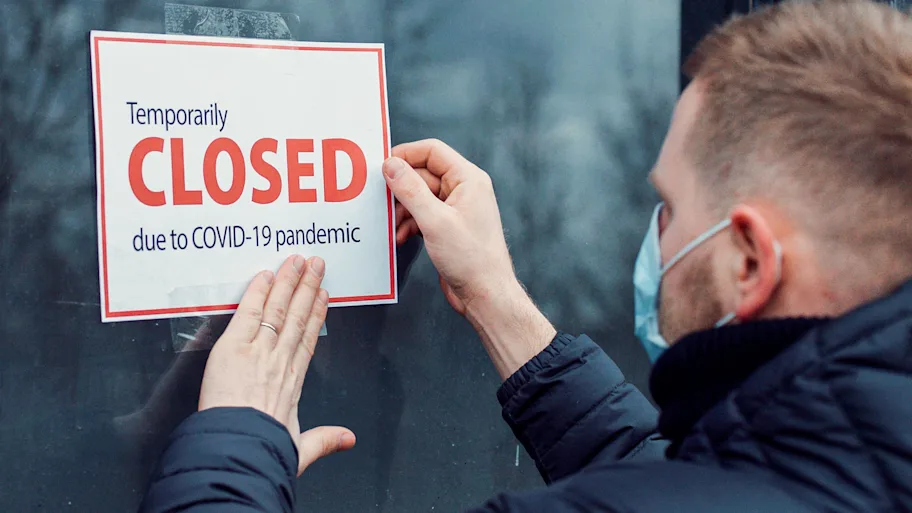
- Science news
- Featured news
- Association between morbidity and poverty reversed early on in US COVID-19 epidemic
Association between morbidity and poverty reversed early on in US COVID-19 epidemic
After March, disproportionately more cases occurred in richer counties while poorer areas had higher death rates. Image: Shutterstock
-- by Mischa Dykstra, Frontiers Science Writer
The first confirmed case of COVID-19 in the USA was on January 20, 2020 in Washington State. Since then, there have been over two million confirmed cases and 113,000 deaths in the country. A shortage of tests has beleaguered the US healthcare system from the beginning of the pandemic.
The media have highlighted the apparently disproportionate toll that COVID-19 has taken among people of color and poorer communities in urban areas. This has been attributed to lower availability of quality healthcare as well as to testing and treatment for COVID-19, a higher disease burden of risk factors such as diabetes and heart or pulmonary disease, a lower probability of working from home, and a higher probability of using public transport.
The relationship between poverty and the incidence of confirmed Covid-19 cases during the first 10 weeks of the pandemic in the United States► Read original article► Download original article (pdf)
Researchers from Ball State University in Muncie, Indiana, analyzed the pandemic’s evolution during the first ten weeks in the US in a new paper in Frontiers in Sociology. Contrary to their expectation and anecdotal reports, they found a shift over time in the association between poverty and the number of confirmed cases early on during the pandemic, without a similar shift in the association between poverty and the number of deaths.
“The results of our study point to a higher incidence in both COVID-19 diagnosis and deaths due to the virus in counties that were more urban and less resourced. These trends changed over time, so that by the first of April the identification of COVID-19 occurred at a higher rate in relatively better resourced counties, thereby reversing the earlier trend”, says first author Dr W. Holmes Finch, Distinguished Professor of Educational Psychology at Ball State University.
The researchers analyzed a dataset of confirmed COVID-19 cases and deaths in each of 2,853 counties between January 21 – April 1, collated from state and local health departments by The New York Times. Data on poverty were obtained from the Poverty Solutions Initiative at the University of Michigan, which includes an “Index of Deep Disadvantage” (IDD) for each county. The higher the IDD, the more prosperous the county.
The researchers show that in January – March, the association between the IDD and the number of confirmed cases was negative, indicating that counties with greater levels of reported poverty had a greater morbidity. But by April 1, this association had become positive, meaning that richer counties had a larger number of confirmed cases. This result, including the inversion of the association with time, was also consistent if tests were done on individual components of the IDD.
In contrast, the pattern for the number of deaths from COVID-19 was different, with a disproportionably greater number of deaths in counties with a low IDD (hence, poorer), especially after April 1. The positive association between deaths and poverty later in the epidemic was likewise consistent when components of the IDD were analyzed individually: for example, a greater number of deaths from COVID-19 was associated with a higher percentage of residents living in poverty or deep poverty, a higher incidence of low birthweights, and with urban counties, and these associations were stronger in April than in March.
Related: France has won the R-number battle, but the COVID war rages on
How to explain these counter-intuitive results? The authors first discuss one possible explanation, namely that the virus truly became less prevalent in poorer urban communities over time, for example because it was less successful at infecting others than in richer urban communities, or because lockdown and social distancing were more efficient in poorer urban counties. But they hypothesize that another explanation is more likely: namely, that the number of confirmed cases has been strongly underestimated in poorer counties because the limited testing resources were mainly diverted to richer areas. More research will be needed to confirm this hypothesis, with its troubling implications for social equity.
“The results of this study point to the importance of access to adequate testing resources for those living in under-resourced communities in the United States, particularly as the need for testing grew nationwide with the spread of the coronavirus. In addition, efforts to mitigate the spread of the virus need to take into account the working lives of those individuals employed in areas such as the service sector, healthcare, and other essential occupations. Finally, and perhaps most importantly, the results of this study point to the need for the American health care system to pay careful attention to public health emergencies in every part of society,” concludes Dr Maria E. Hernández Finch, the study’s last author.
Original article: The relationship between poverty and the incidence of confirmed Covid-19 cases during the first 10 weeks of the pandemic in the United States
REPUBLISHING GUIDELINES: Open access and sharing research is part of Frontiers’ mission. Unless otherwise noted, you can republish articles posted in the Frontiers news blog — as long as you include a link back to the original research. Selling the articles is not allowed.






